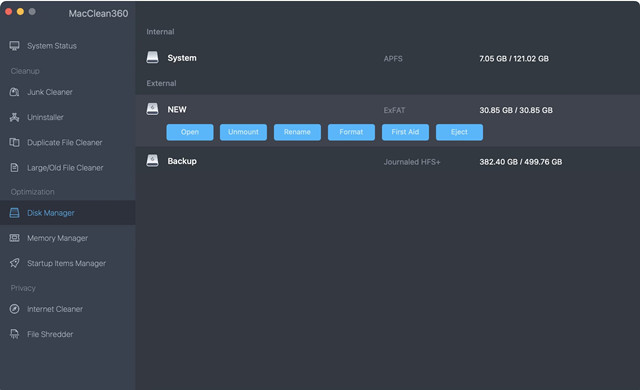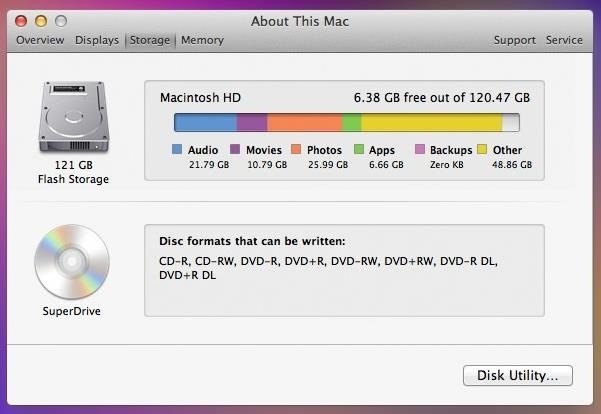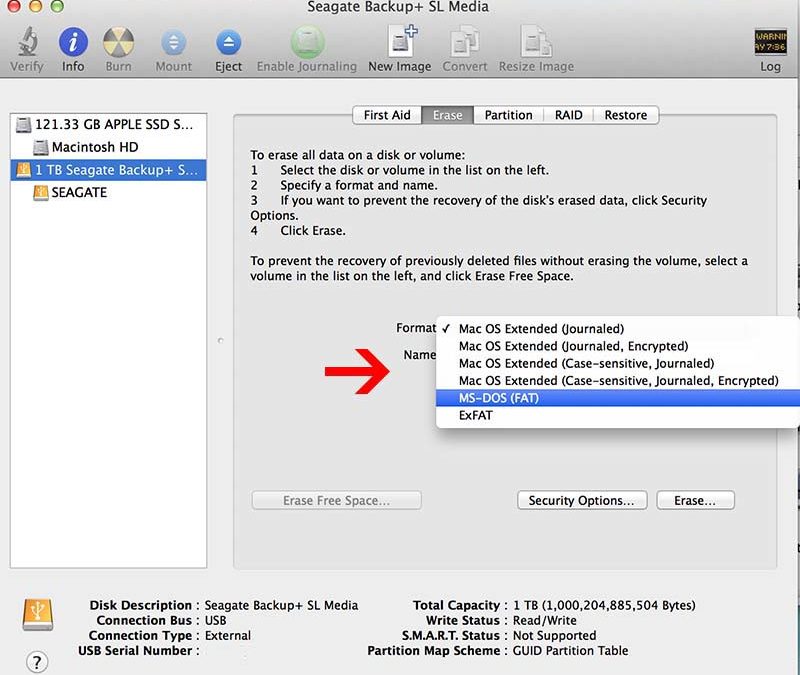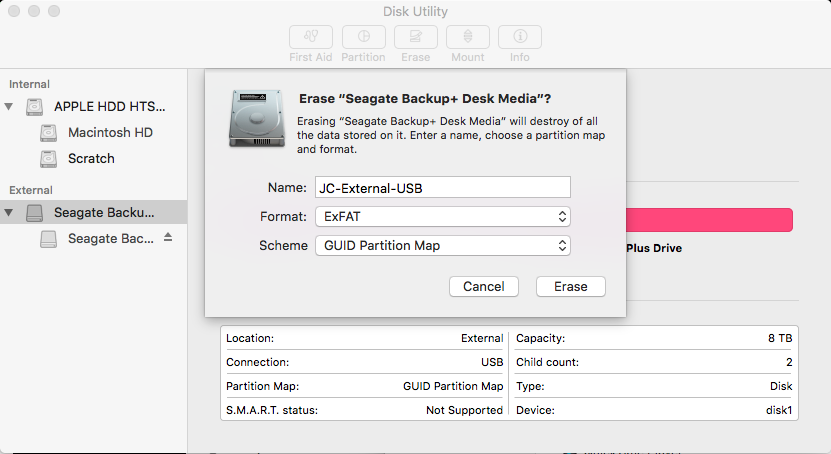- Best External Hard Drive For Macbook Pro
- Correct Format For Mac External Hard Drive
- Best Format For Mac External Hard Drive


Below are the steps to follow when formatting the WD Drive for Mac. Connect your WD hard drive to your Windows PC; Click on the Start button and select This PC. A new Windows Explorer window opens. Right-click on the icon assigned to the WD Drive. Click on Format in the pop-up menu. After realizing that you can reformat WD hard drive to FAT32 or exFAT to make it compatible with Mac OS X and still can be used under Windows, it is time to check out how to reformat WD hard drive for Mac and PC in Windows successfully. Here are two ways offered and you can choose on. Launch Disk Utility. Either head to Applications Utilities, or tap Command + Space and start typing. If you need to use your drive on both Mac and PC then it’s best to format exFAT. If you are not sure which one is best for you the File System Format Comparisions highlights the main difference between file systems. Seagate internal drives must be formatted before use.
While most external hard drives are already designed to work for Windows computers, there are times when you need to reformat one. You might want a drive that works with Macs and PCs, or maybe you want to partition it, which will split it up into two different formats. Here’s how to format an external hard drive for Windows 10 or partition it.
How to Format a Hard Drive for Windows 10
Note: Formatting your drive will erase all the existing files on it. So if your external hard drive already has important files on it, make sure to back them up before proceeding.
- Connect your external hard drive to a Windows computer. If your external hard drive is working, your computer will automatically detect it, and the drive will appear under Devices and Drives next to your internal drives in the This PC window. You can also find it in the left sidebar of File Explorer.
Note: If you already used your external hard drive on a PC, be sure to back up any files on it. Formatting your drive will wipe out all the data in it. Winhttrack website copier.
- Right-click on the external hard drive and click Format.
- Choose a format under File System. By default, Windows computers will choose NTFS (New Technology File System) for you because that’s the native Microsoft filing system. But if you want the external hard drive to also work on a Mac, you should choose exFAT.
Note: The exFAT file system only works on Mac 10.6.5 or later, and Windows XP SP3 or later.
- Check the Quick Format box, and click Start. Depending on the size of the drive, and if there are files to be deleted in it, this can take a few to several minutes to finish.
- Click OK when the Format Complete pop-up screen appears.
Now you have a hard drive formatted for Windows, but what if you wanted to use it with Mac computers also? One easy way to have a hard drive that works with Mac and Windows is by partitioning it. This means you’re splitting the drive into two formats, one for Mac and one for PC. Here’s how to do that:
How to Partition an External Drivein Windows 10
- Open the Windows search box, type “diskmgmt.msc,” and hit enter. The Windows Search Box is the magnifying button icon in the bottom-left corner of your screen.
- Right-click on your external hard drive and select Shrink Volume. If this option is not available to you, reformat the drive to NTFS and try again.
- Enter an amount of space that you want to shrink your volume by. The remaining space will be displayed in megabytes.
- Then click Shrink. This will split the hard drive, with one part becoming unallocated space.
- Right-click the unallocated space on your drive and select New Simple Volume.
- Click Next.
- Then indicate how big you want the partition to be. If you want to use the rest of the space, enter the maximum disk space indicated above it. Then click Next.
- Next, choose what drive letter you want to use. Letters that have already been assigned to other drives will not be on this list, so don’t worry if there are missing letters. Just choose among the drive letters still available.
- Go to File System and choose a format. Windows will choose NTFS for you because that’s Microsoft’s native filing system. But if you want the external hard drive to also work on a Mac, you should choose exFAT, which is an upgraded version of FAT32.
Note: The exFAT file system only works on Mac 10.6.5 or later, and Windows XP SP3 or later.
- Check the Quick Format box, and click Next.
- Finally, click Finish. If a pop-up appears telling you to format the disk, click Format Disk. After that, the newly formatted disk will open automatically.
Partitioning your external hard drive will enable you to perform tasks in one section without affecting the rest of the drive. If you want to know how to format a hard drive for Mac, check out our previous article here.
Was this article helpful?
Related Articles
Aug 28, 2020 • Filed to: Solve Mac Problems • Proven solutions
There are lots of people who mistakenly think that the USB drives and hard drives format don’t really matter. But the reality is quite different. Whether it is a hard drive or USB or internal drive, Mac uses different format support. So, you can’t simply use the same drive with both Windows and Mac. As a result, you will need to format the hard drive for Mac. Using the Mac preferred file system is important otherwise the files will be of no use to you.
In this article, we are going to discuss how to format a hard drive for Mac and some related terms too.
Part 1. Situations When Formatting a Hard Drive on Mac:
Before you get deep, you must understand what is the drive formatting. Some people confuse the term with reformatting. Basically, formatting is the process of preparing the storage devices such as hard disk drive, solid-state drive, USB flash drive, or any other for initial use.
The basic operation is termed as low-level formatting which means erasing the existing data on the disk. But it leaves the track to recover the data using the recovery tool.
There is another term related to disk formatting and it is called reformatting. It is called high-level formatting as it is used to prepare the disk for different file system formats. It is usually done during the OS installation or adding a new disk. Reformatting is done to free the storage space from the previous content stored in it.
You can consider disk formatting in macOS in various circumstances. Whether your system has corrupted data, damaged software, impending system upgrade, storage is full, or it is running slow, formatting will fix a lot of issues. Take a look at the scenarios given below and you will be sure that disk formatting will help you.
- If you want to quickly erase all content from the drive permanently without leaving a trace of data on it.
- If you want to change the format of the disk such as PC format like FAT or exFAT to Mac format.
- If you see the message that the disk is not readable by Mac.
- If you want to resolve a disk issue that can’t be fixed by the Repair feature of Disk Utility.
- If the macOS installer can’t see the disk or unable to install it.
- In case the macOS installer says that the drive can’t be installed because it is a part of Apple RAID.
Under all these situations, formatting is most likely to fix your problems and you will be able to use the drive on Mac.
Part 2. How to Format a Hard Drive on Mac:
Formatting is a very simple procedure that is operated in a similar way for all sorts of storage media. So, whether you wish to format the internal hard drive, external drive, or a USB flash drive, the procedure is the same for all. Here is the step by step guide you need to follow to format the hard disk on Mac. Before you erase a disk, make sure that you have a backup of the files you want to keep.
Step 1: Connect the USB drive or external drive to Mac and launch the Disk Utility from Applications.

Step 2: From the left side panel, pick the volume or the drive that you want to format and switch to the Erase tab.
Step 3: As you click on the Erase button, you will see several fields in the section. Enter the given information-
Best photo apps for mac free. Gimp (Free) Gimp is a free open-source photo editing app that has been on the market for over 22 years and is available for Windows, Mac, and even Linux. Unlike many free apps, Gimp doesn’t have any ads or in-app purchases. Its grey interface might seem a little old-fashioned and it may be a bit sluggish when it comes to complex effects, though.
- Name- Enter a name for the disk such as Macintosh HD/SSD/USB Drive or anything else you want.
- Format- You have to choose a Mac supported format from the list. The most recommended format is APFS or Mac OS Extended (Journaled). There are numerous other formats too which will be displayed in the drop-down menu. You can select any format as per your requirement.
- The scheme- If this option is available, then you should choose the GUID Partition Map from the option.
Step 4: After specifying the fields, click on the Erase button at the bottom of the window and Disk Utility will format the drive.
Once the formatting is complete, you can use the disk for a backup drive, sharing, time machine backup, or any other requirement. In case if the drive doesn’t appear in the Disk Utility interface, you will have to disconnect all the extra and non-essential devices connected to Mac. Make sure that the External drive is on and connected properly. Restart your Mac and then carry out the task.
Part 3. How to Perform Mac Data Recovery After Format:
There are situations when Mac users don’t get the chance to create a backup of their data and forced to format the hard drive. But you don’t need to panic. You can get your hands on Recoverit data recovery for Mac. If you have mistakenly formatted the data that you still need, Recoverit is the best chance you have to get the files back. It is a complete data recovery solution that is capable of recovering all kinds of files with wide format support of 1000+.
You can download the software from the official website and install it immediately on Mac. Once the setup is complete, follow the steps below to recover formatted drive files.
Step 1: Specify Location:
Run the program and specify a location from the main drive. If data is lost from an external drive or USB flash drive, then you’ll have to connect the drive with the system and then specify the location.
Click on the Start button to initiate the scanning process.
Step 2: Scan Results:
Depending on the data that is lost or deleted, scanning will take some time. As the process finishes, the files will be displayed on the screen according to their respective format.
You can decide whether you want to look for files according to file type or file path. You can also stop the scanning process in between if the results are displayed before the scanning finishes.
Step 3: Preview and Recover Formatted Data:

As soon as the data is displayed on the screen, you can have a preview of the files. Select as many files as you want and have a preview of the files. Tap on the Recover button to save the files on your system.
As you are retrieving the files, keep in mind not to save the files in the previous location. Depending on the amount of recovery, it will take a while and ultimately you’ll have your files back. If the normal scan doesn’t work for you, Recoverit also has a deep scan mode to look deeper for the deleted and lost files.
Part 4. Different Formats of Hard Drive for Mac:
Mac Hard drives have wide support for formats but there are two major formats that are preferably used by the Mac users. It also depends on the macOS version you are using. The key point to consider is that the drives formatted with the newer versions won’t be recognized by the older devices. So, when you are formatting a USB drive, it will be ideal to choose the right format which is Mac OS Extended.
The supported Mac formats for the drive are explained below:
APFS:
The APFS format is optimal for Solid State Drive such as flash drives. Hence, if you are formatting a flash drive, you should definitely choose the APFS format. Along with the flash drives, this format is also faster and more reliable for Mac hard drives.
Mac OS Extended:
Talking about Mac OS Extended, it is perfectly suitable if you want to use a drive for backup. The Time Machine feature of Mac still doesn’t have support for APFS disk. In case you select this format, Time Machine will prompt you to reformat the drive.
When you are formatting disk on Mac, keep some things in mind. Never ever change the inbuilt format of a Mac drive.

Part 5. Tips for Formatting a Hard Drive on Mac:
Even though formatting doesn’t seem like a big deal, still it can be very helpful. Total war shogun 2 for mac. So, you must stay active and keep all things in mind. Here are some tips that might help you when you are about to format a Mac hard drive.
- Disk Utility in macOS Sierra and later chooses a compatible format for you automatically. But you should know the default format for your drive. It is advised not to change the default format of a Mac hard drive under any circumstances.
- You can check the format of a drive inside the Disk Utility Menu bar. Just click on the Get Info option and you’ll know the current format a drive is using to store files. Open the System information and select the storage. In the right-side panel, you will see the respective format for each volume on your Mac.
- If you want to erase your disk before you install the latest High Sierra on your Mac for the first time, then opt-out for the Mac OS Extended format. During the installation of OS, the macOS installer will automatically decide whether to use APFS or Mac OS Extended for the disk.
- You can also use the FAT32 format on Mac for USB drives if you wish to use it on both Mac and Windows. The FAT32 format can be read and written on both OS and hence it is the most versatile format for use.
- If you wish to transfer big files from Windows to Mac, you’ll still have an alternative, i.e. exFAT. This format doesn’t have a file limit but it can only be read on Mac OS X Snow Leopard or later.
So, before you pick out the format, look out for the advantages and the disadvantages of the formats to choose the optimal format for Mac. The Windows supported format is usually listed as an MS-DOS format in the list of formats.
Best External Hard Drive For Macbook Pro
Wrapping It Up:
As you can see, now you know how to format hard drive/ USB flash drive/ internal drive/external drive on Mac. So, from now on whenever someone is in need, you can help them. And formatting doesn’t always finish without complications. So, if you lost some important files while formatting the drive, you can use Recoverit data recovery software for Mac to restore them in the original condition. Recommend the software to your friends and family and let them know that there is a master tool for recovery for both Mac and Windows OS in the market.
Correct Format For Mac External Hard Drive
What's Wrong with Mac
Best Format For Mac External Hard Drive
- Recover Your Mac
- Fix Your Mac
- Delete Your Mac
- Learn Mac Hacks
